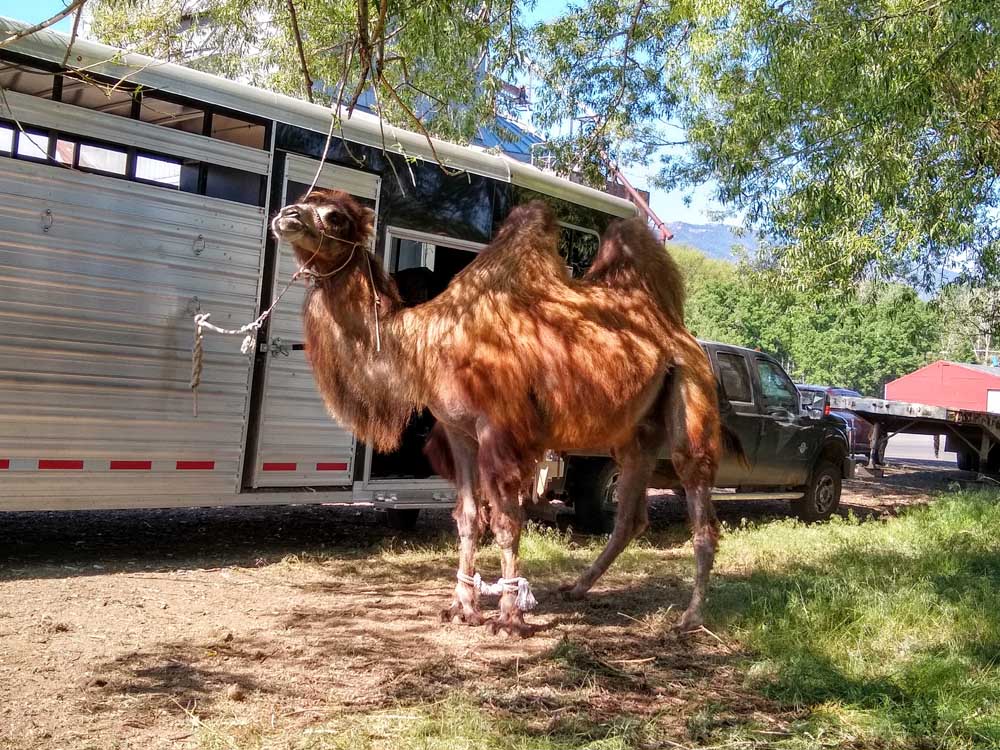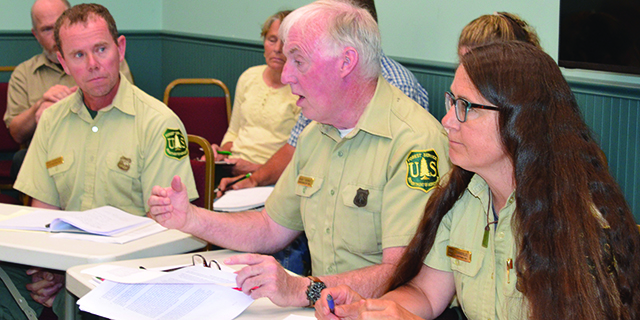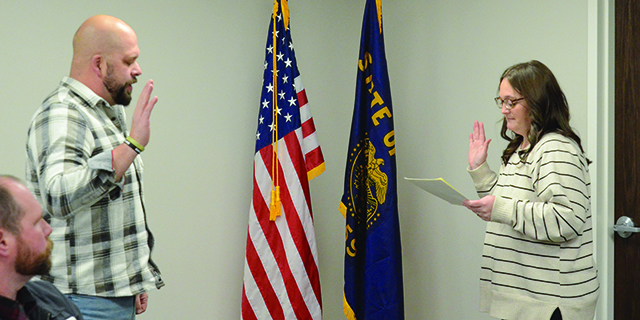The story of a camel, a veterinary student and a doctor
Published 2:00 pm Thursday, June 24, 2021

- Gus, a two-hump camel (or bactrian), made the trip with Matthew and his owner as a companion to the camel.
ENTERPRISE — What do a camel, Miss Idaho and a vet at the Enterprise Animal Hospital have in common? A lot, it turns out. At least on Friday, June 4, they did when Burns rancher Carolyn Mathews brought her camel, Matthew, to the veterinary hospital where Dr. Kala Grover, DVM, gelded the animal.
That day, Kim Layne, a fourth-year veterinary student from Washington State University, who was Miss Idaho 2020, had the opportunity to witness the procedure. Layne has ties to Wallowa County from coming to the county to experience the Eagle Cap Wilderness area and whose boyfriend works at the Wallowa Lake Marina. She was doing an externship (a weeklong field experience) at Enterprise Animal Hospital through her veterinary program. She will graduate in 2022.
Trending
There are two types of camels: dromedary and bactrian. Mathews explained the easiest way to remember the difference between the two is to think of each camel lying on its side. “The dromedary camel has one hump. When lying on its side, it forms the letter “D”. The bactrian, when lying on its side, forms the letter “B” with its two humps,” she said.
Matthew, a 2-year-old dromedary camel, was accompanied by Gus, a 6-year-old bactrian. Mathews has had camels for about five years, but has prior experience with them from when she lived in Texas. She explained that she also worked with lions, tigers and other exotic animals and trained horses while working for a rancher.
Camels are not as unusual in Oregon as one might expect.
“There are a lot more than people think,” she said.
Camels are social animals and live in herds. Mathews explained how to greet a camel. The person who greets the camel holds a hand out with the back toward the camel, so the camel can smell it. Next, the person reaches out to touch the camel’s shoulder, and stroke it. Camels have rough guard hairs on top of wool, which is shed.
“You don’t want to approach a camel head on,” she said.
Trending
Camels greet each other by blowing in each other’s faces. Next, the person blows in the camel’s face.
“Gus is the kisser, “she said.
Both Grover and Layne have experience working with camels. Layne gained her experience in Tunisia in 2016 working in an international public health and veterinary medicine program.
“Camels are a big industry there. Camels are used in tourism, for milk and for working purposes. It’s cool to see them here to have clinical work done,” she said.
She said she has always wanted to do mixed-animal medicine and has had that experience through the Enterprise Animal Hospital.
Also, “Joseph is a beautiful area,” she said.
Grover, also a WSU alum (undergraduate school) completed her clinical veterinary work at Oregon State University and was a veterinarian in Burns when she met Mathews and her camels. Like Layne, Grover has international experience with camels having worked with World Vets in Mongolia.
She said in the Burns area vets are, “few and far between.” She said she has had, “a lot of work with llamas and alpacas. They are similar to camels — they’re all camelids” and admits camels can have strong personalities. As a veterinarian in general practice in McMinnville she worked with pigs, llamas and alpacas.
Matthew had to be sedated for his procedure, as well as hobbled, for the safety of the staff as well as his own.
“He is just a baby,” Grover said. “Think of a 10- or 11-year-old boy and he has all these sounds and smells that he is not used to,” in addition to the pain of the procedure.
Grover said there are differences between camels and other large animals — horses and cattle — and said she enjoys the excitement of it being different. Horses are her special area of expertise.
“Equine medicine is my passion,” she said.
Camels can handle extremes according to Matthews. The bactrians are usually found in Central Asia which is known for its extreme cold climate and the dromedary in North Africa. Contrary to popular belief, the camel’s humps are not made of water, but fat stores. When the camel drinks and eats, it converts the fluids and food to fat. As it uses its food stores, the hump diminishes until the camel has the opportunity to eat and drink again, replenishing its hump stores of fat.
A camel can drink 30 gallons of water in 13 minutes and is the fastest-hydrating animal on the planet. Matthews feeds her camels hay (alfalfa is too rich), and said camels are foragers. The trees behind the veterinary clinic received a nice trimming while the camels spent two nights there. They are not picky eaters. With their thick leathery lips, they can eat thorny, tough plants other animals find disagreeable and inedible.
Camels are full grown when they are 6 or 7 years old and live to be about 17, though some may live longer.
Some people have heard camels spit. Camels have a variety of defense mechanisms; spitting is just one. Matthews said bactrians spit, growl and stomp their feet. Dromedaries spit and regurgitate the contents of their stomachs when they feel threatened. Camels also bellow, moan, groan, snort and make a number of other noises.
Another interesting feature of the camel is the hard, heart-shaped callus on its chest. There are also calluses on their knees. These calluses enable air to circulate under the camel when it lays down, serving as a sort of air-conditioning system keeping the animal cool.
The camel also has a third eyelid that it can shut to protect its eyes from sand and shut its nostrils during a sandstorm. According to National Geographic, camels are often referred to as “ships of the desert” and have been used for transportation for thousands of years. They can grow to be more than 6 feet tall at the shoulder and weigh between 880 and 2,200 pounds, depending on the species and gender when fully grown.
An interesting fact to know and tell: the sound used for Chewbacca in the “Star Wars” movies was made by a camel.









